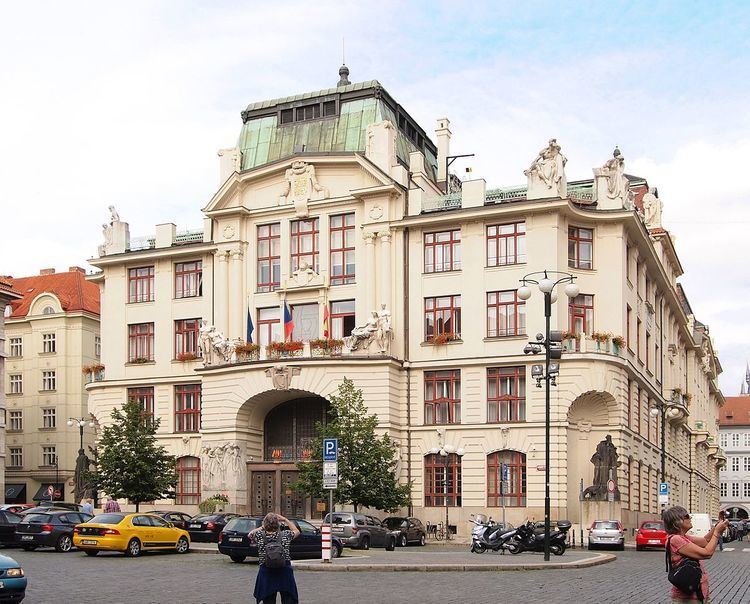Location Mariánské náměstí Opened 1911 Architectural style Art Nouveau | Completed 1911 Phone +420 236 001 111 Construction started 1908 | |
 | ||
Address Mariánské nám. 2/2, 110 00 Praha 1-Staré Město, Czechia Similar Clam‑Gallas Palace, Church of the Holy Spirit in O, Dům U Zlatého prstenu, Church of St Castulus, Church of St Gallen (Prague) | ||
Prague New City Hall is located on the east side of Mariánské náměstí (Virgin Mary Square) in the center of the Old Town (Prague 1) across from the Clementinum building complex. Since 1945 it is a seat of Prague City Hall and the mayor of the City of Prague. The building contains formal residences for the mayor and other city officials.
Contents
History
The hall stands in Virgin Mary Square. This was the site of a Romanesque church until 1798. In 1904 the city council announced a competition to design a new city hall. The architect Osvald Polívka was announced as the winner in 1906. The new city hall was constructed in 1908 – 1911 based on Polívka's Art Nouveau plans. There were a few changes during the construction when it was realised that the floor area needed to be increased and the King also had a view.
Description
The building is decorated by sculptures and reliefs by Stanislav Sucharda, Josef Mařatka and Ladislav Šaloun. Saloun's sculptures are on the corners of the building, he is the same local sculptor who created the city's iconic Jan Hus Memorial.
The building, which was intended as a tax and financial office, was equipped with paternoster lifts, which were very modern at the time. There were two lifts designed by John Prokopec which included safety features that allowed the lifts to operate at higher speeds with each of the twelve carriages having room for two people. The core of the building was a hall on the first floor with chandeliers and a transparent roof by Franta Anýž. Since the 1970s there has been only one paternoster lift, which dates from that decade. This lift still covers the four floors but it now has thirteen carriages.
On the wall of the main staircase leading to the assembly hall, there is a memorial plaque for Milada Horáková by sculptor Jaroslava Lukešová. Horáková was a politician in the city. She had opposed both the Nazis and the communists. The latter executed her after a show trial in 1952.
The New City Hall is a residency for the local government. Apart from the mayor of the City of Prague, the members of Prague City Council and some of the departments also have their meetings there.
